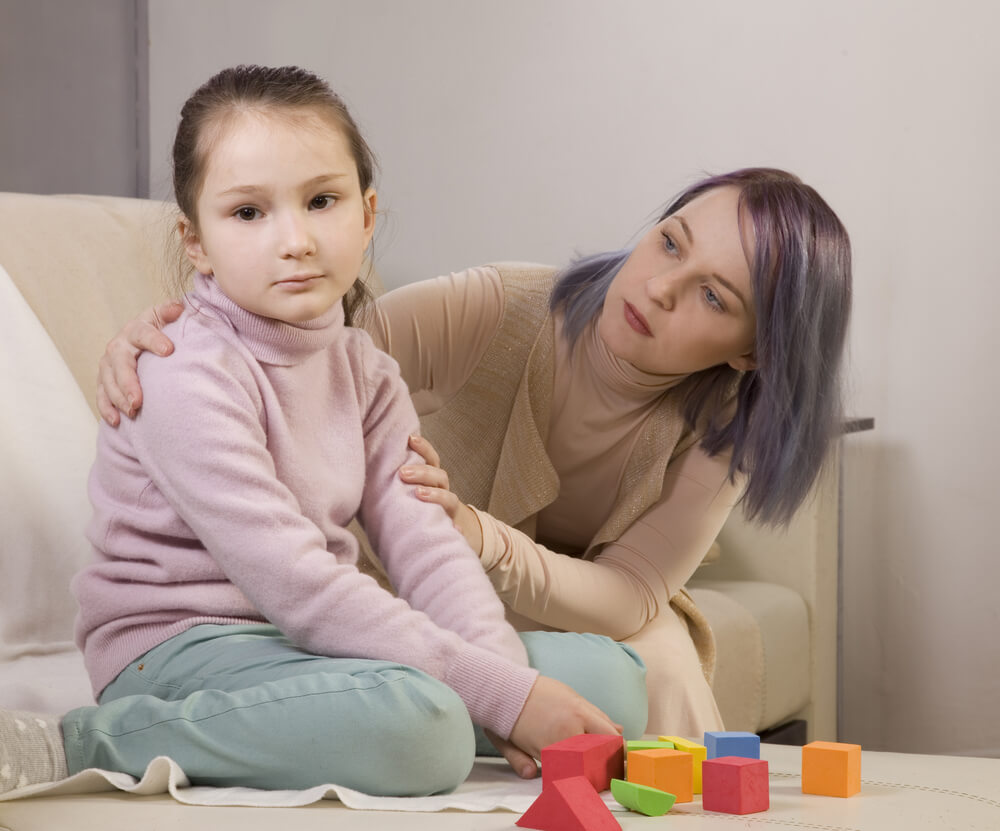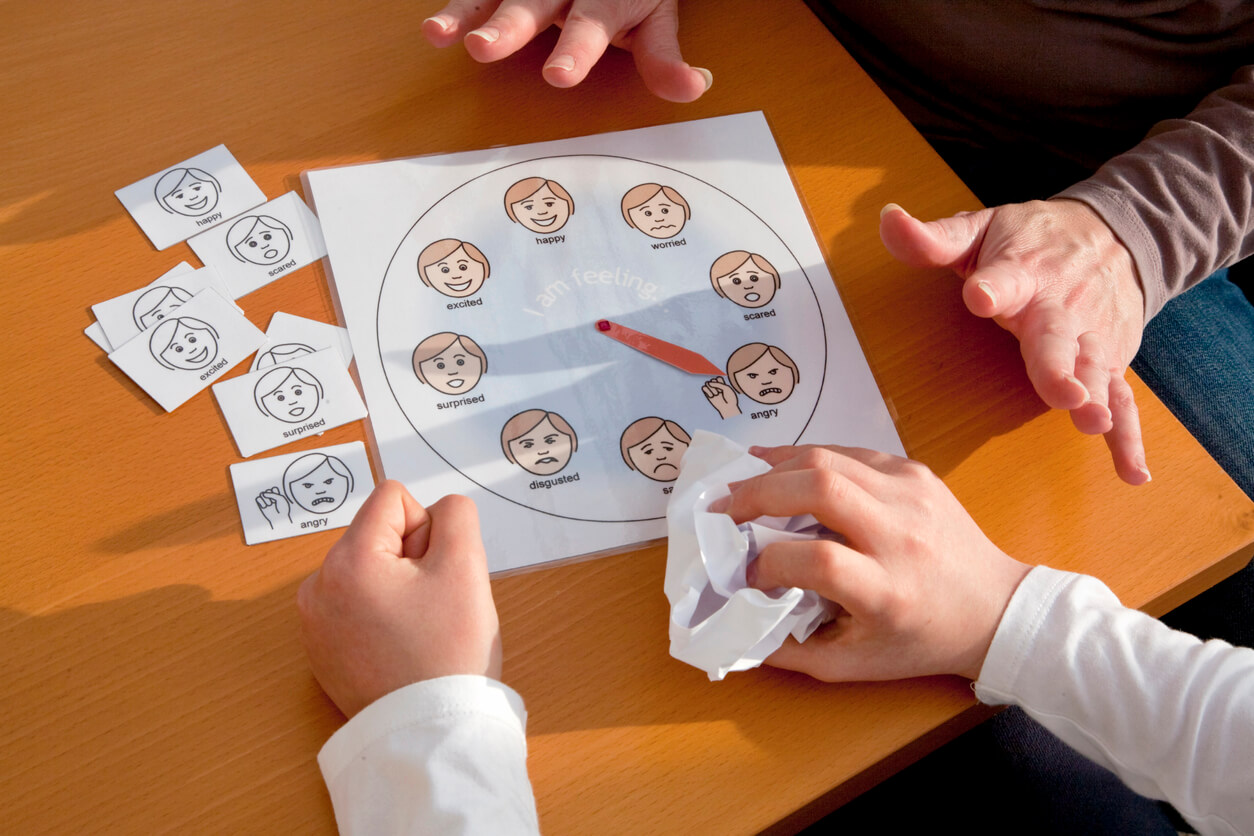3 Guidelines to Improve Communication in Children with ASD

Autism spectrum disorder (ASD) is a neurodevelopmental condition that mainly affects the communication and social interaction of those who suffer from it. And when we say communication, we refer to much more than speech, as the exchange between people is established in different ways. For this reason, today we want to offer you 3 tips to improve this ability in children with this diagnosis.
Communication can be improved through different strategies, but for that, we must first understand the complexity involved in its development and each of its dimensions. Only in this way will we be able to open ourselves up to experience new ways of interacting and not stick only with the traditional and known. Shall we start?
What is autism spectrum disorder (ASD)?
All people with ASD are different, as there are no identical individuals in the world. However, they present certain common characteristics that manifest themselves to different degrees, but that usually strongly suggest this condition. Among them are the following:
- Communication difficulties
- Problems in interacting with other people
- Peculiar and restricted interests
- Repetitive or stereotyped behaviors
- Impossibility of anticipating the intentions or motivations of others
The complexity of a person’s ASD depends on the tenor with which these characteristics are manifested. However, to a greater or lesser extent, it’s common to find some alteration or deficit in the social, communicative, and behavioral areas.
To improve communication in children with ASD, it’s important to arrive at the diagnosis as early as possible. The brain of infants is very permeable to changes in the first 5 years of life and the interventions that are carried out at that stage can modify the course of this condition.

Communication guidelines for children with ASD
In our day-to-day, communication is of enormous importance, as it’s what allows us to exchange ideas and sensations with others and to function in the society in which we live. Through language, we express our needs, our desires, and we also establish our limits.
For people with ASD, communication can become a huge challenge. And this isn’t limited to a limited repertoire of words, but to a difficulty in establishing the exchange to which we’re accustomed. Therefore, we must learn new ways to communicate with children with ASD and promote this to the rest of society.
Some of the useful strategies that can be put into practice are as follows.
Model behavior
It involves repeatedly showing the child what behavior is expected of him. This is executed sequentially to reduce complexity and make it easier to follow and imitate.
For example, if we want the child to learn to dress themself, we must show them that the arm is placed inside the sleeve and then encourage them to try it for themself. This favors learning by imitation, but it’s necessary to know clearly what it is that you want to teach.
Use image reinforcement
The ability to comprehend words may be affected, as well as the ability to retain a command or evoke an idea. For this reason, it’s useful to use images, photographs, or everyday objects so that the child associates them with a specific request.
An example of this is encouraging them to point to the picture of the toilet when they want to go to the bathroom.
Avoid the use of metaphors and phrases with double meanings
Indirect language is more difficult to understand than direct language. This is closely related to the ability to “read people’s minds” and understand aspects that go beyond the meaning of words.
Children with ASD lack this ability and therefore, it’s best to talk to them in a simple and concrete way.
It’s not just about teaching signs and rules, but about promoting interaction and betting on communication in alternative ways. That is, to reinforce the value of social exchange that enables communication.
Other recommendations to improve communication
In addition to the guidelines mentioned, other strategies can be implemented, which are useful in any area in which the child with ASD develops:
- Stimulate communication. Avoid interpreting or “getting ahead” of their requests and let them develop the idea as best they can.
- When speaking or giving instructions, use everyday vocabulary that the child is used to.
- Speak clearly, simply, and slowly.
- Opt for positive language to redirect inappropriate behavior to appropriate behavior. For example, “let’s jump down here” instead of “don’t jump on the couch.”
- Reinforce desired behavior, and recognize achievement. You don’t need to resort to material objects, but offer the little one something of interest (such as a gesture, a walk, a shared moment) so that they establish a causal relationship between responding to our request and receiving what they want.
- Promote orderly, predictable environments, with a low load of stimuli.
It’s worth noting that the focus shouldn’t be on “reducing” or “adapting” the child with ASD to language, but quite the opposite: Adapting the language to each child and making it functional to their capacities and abilities.

Every person is unique
Everyone has their own uniqueness and that makes us special. Therefore, we can’t generalize to all children with ASD or provide magical and universal solutions. What we must do is know and understand the child in front of us and enter their world to be part of their activities.
To communicate with others, we must understand their needs, their abilities, and also their interests.
As noted above, ASD manifests itself in multiple ways and this leads us to look for guidelines that adjust to the possibilities of each individual.
Finally, we mustn’t forget that parents, families, and educational institutions must be accompanied so that we can all contain and guide the learning processes of these children.
All cited sources were thoroughly reviewed by our team to ensure their quality, reliability, currency, and validity. The bibliography of this article was considered reliable and of academic or scientific accuracy.
- Cornelio-Nieto, J. O. (2009). Autismo infantil y neuronas en espejo. Revista de neurología, 48(2), 27-29.
- En el TEACCH Center, P. (2007). Principios y estrategias de intervención educativa en comunicación para personas con autismo: TEACCH. Revista de Logopedia, foniatría y audiología, 27(4), 173-186.
- Gómez, J. L. C., & García, V. A. (2012). Tecnologías de la información y la comunicación: aplicaciones en el ámbito de los trastornos del espectro del autismo. Siglo Cero: Revista Española sobre Discapacidad Intelectual, 43(242), 6-25.
- Mora, C. E., & Fortea, I. B. (2012). Comunicación, atención conjunta e imitación en el trastorno del espectro autista. International Journal of Developmental and Educational Psychology, 3(1), 49-57.